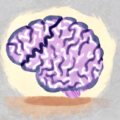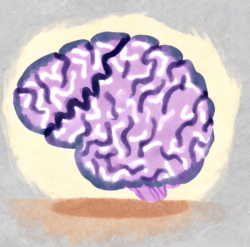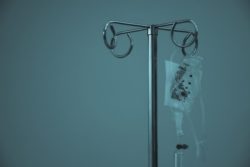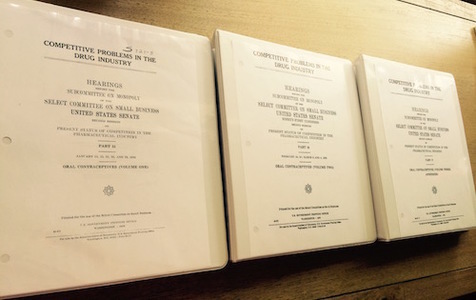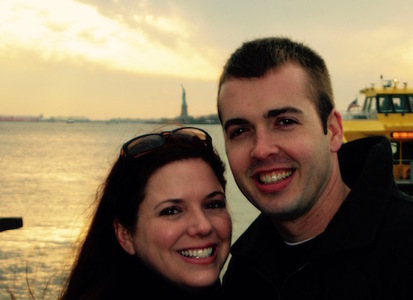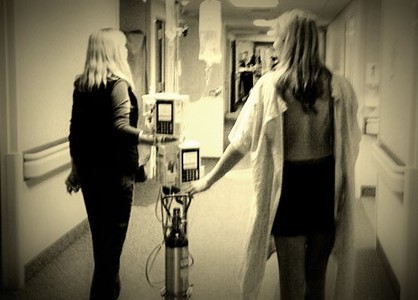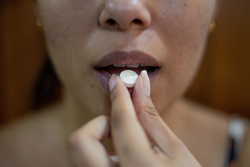I thought I was safe using the birth control pill. Even though I was older than the typical birth control pill user, my doctor felt that the newer low dose pills were safe enough for me. I had been using birth control pills off and on for about 10 years, but leading up to my wedding in February, 2012, I switched to a new brand, Kariva. The pill I had been using previously was making my migraines worse, and they seemed to be a bit better on Kariva.
A few days before my wedding, I noticed that my leg was swollen. I had an ultrasound test to look for a clot, but nothing was found. After our wedding, my husband and I flew to his hometown for a second reception. The day after the two-hour return flight I went back to work. That was the day that I had my stroke. It started in the morning with a headache that felt like another one of my chronic migraines. I took my usual remedies of Sudafed and either Aleve or Excedrin Migraine to dull the headache so I would be able to work. I spent a good part of that day writing a customer report, and noticed I was making a lot of typing errors.
At the end of the work day I went home and went to bed to rest. My head didn’t feel right, so my husband called an ambulance about 7 pm. They didn’t see anything noticeably wrong. My husband called the ambulance again about an hour later when I could no longer walk. My left leg was paralyzed. We went to a nearby hospital, and they discovered I was having a stroke. I had a CT scan and an MRI. I don’t remember any of this as I was unconscious. Due to the nature of the stroke, a sagittal venous sinus thrombosis, they felt they did not know how to treat the stroke. This type of stroke is thought to be quite unusual. They sent me to another hospital downtown (by helicopter). That hospital sent me to St. Joseph Medical Center / Barrow Neurological Institute the next day.
Starting at my frontal lobe, and going through the parietal lobe, my main brain drain vein had clotted. Blood was leaking into my brain all along the vein since the blood couldn’t drain. There was damage to both the left and right sides of the brain, and my brain had swollen. I was first given heparin, then warfarin. I was in ICU for about eleven days, until my brain was not swollen anymore. Then I was moved over to the acute rehab ward for another month. I continued rehab, all three flavors, physical, occupational and speech at St. Joseph’s Outpatient Rehabilitation, until my allotted 60 hours of therapy from insurance was used up. I continued going to the Neuro-Rehab clinic again the next year when I started over with the 60 hours of therapy. My neurologist was of the opinion that my stroke was most likely caused by the birth control pill.
I had to learn how to write again, dress and shower myself, and most importantly walk. My entire left side was not functioning at first, but my left arm came back rapidly. I had to be able to walk a certain distance using a walker before I went home. It felt like I had been gone from home forever! I am still working on my rehab four years later. The left side paralysis resolved into left side weakness at the in-patient rehab hospital. I continue to perform exercises at home (physical and cognitive), and I am walking without a cane now.
I returned to driving with the help of a specialized occupational therapy company that works with disabled people, at about six months after my stroke. My visuospatial abilities were affected by the stroke, and I had to learn how to react fast enough, keep my car in the center of the lane, and pay attention to everything going on around me.
I had significant problems with my executive brain function and fatigue. I saw a speech therapist for about 3 years. In addition, I took classes at a local community college, one class per semester. I graduated last week from a certificate program in Database Management. Prior to the stroke, I was an engineer at a manufacturing company. My ultimate goal is to go back to work.
Real Risk Study: Birth Control and Blood Clots
Lucine Health Sciences and Hormones Matter are conducting research to investigate the relationship between hormonal birth control and blood clots. If you or a loved one have suffered from a blood clot while using hormonal birth control, please consider participating. We are also looking for participants who have been using hormonal birth control for at least one year and have NOT had a blood clot, as well as women who have NEVER used hormonal birth control. For more information or to participate, click here.

